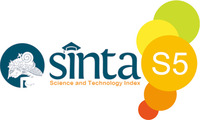Language style in Korean beverage advertising slogans
Abstract
Keywords
Full Text:
PDFReferences
Busetto, L., Wick, W., & Gumbinger, C. (2020). How to use and assess qualitative research methods. Neurological Research and Practice, 2, 1-10. https://doi.org/10.1186/s42466-020-00059-z
Ginting, H., & Ginting, A. (2019). Beberapa teori dan pendekatan semantik. Pendidikan Bahsasa Indonesia dan Sastra (PENDISTRA), 2, 71-78. https://doi.org/10.54367/pendistra.v2i2.594
Efendi, R., & Mashadi, M. (2020). Pengaruh personal selling, dan slogan iklan terhadap brand awareness produk Yakult. Jurnal Ilmiah Manajemen Kesatuan, 8(2), 127–137. https://doi.org/10.37641/jimkes.v8i2.332
Fauziyah, N. N., & Ilmi, R. N. (2020). Denotative and connotative analysis on Elia Pettie’s short story. Journal of Applied Studies in Language, 4(1), 57-67. https://doi.org/10.53682/eclue.v8i1.1590
Nainggolam,V. Y. B., Yakob, M., & Nucifera, P. (2020). Penggunaan bahasa persuasif dalam iklan niaga bergambar pada surat kabar serambi Indonesia tahun 2019 (The use of persuasive language in pictorial commercial advertismentes in the Serambi Indonesia newspaper in 2019). Jurnal Samudra Bahasa, 3(2), 26-40. https://doi.org/10.33059/jsb.v3i2.2501
Nurlaini, N., Suyono, J., Elisabeth, D. R., & Bonn, A. T. B. (2021). The Influence of Advertising, Sales Promotion, and Service Quality on Customer Loyalty of Bank Jatim Indonesia. IJEBD (International Journal of Entrepreneurship and Business Development), 4(3), 262-272. https://doi.org/10.29138/ijebd.v4i3.1218
Kanaza, F. U. (2020). A language function: The analysis of conative function in Meghan Markle’s speech. Etnolingual, 4(1), 54-73. https://doi/10.20473/etno.v4i2.20347
Sarifuddin, M. (2021). Konsep dasar makna dalam ranah semantik. Jurnal Ilmu Dodial dan Pendidikan, 5(2), 634-638. https://dx.doi.org/10.58258/jisip.v5i2.2024
Yunira, S., Fradina, S., Sumbayak, M., Putri, N. S., & Derin, T. (2019). Re-Visits the grand theory of Geoffrey Leech: Seven types of meaning. REiLA: Journal of Research and Innovation in Language, 1(3), 106-110. https://doi.org/10.31849/reila.vIi3.3768
Zakariah, N. S. A., Abd Rahman, N. D., & Dolmat, N. A. (2017). A review on the advertisement effectiveness in service sector: High education attractiveness.” Journal of Business Innovation, 2(1), 62-72.
DOI: https://doi.org/10.17509/jokal.v1i1.33112
Refbacks
- There are currently no refbacks.
Copyright (c) 2021 Journal of Korean Applied Linguistics

This work is licensed under a Creative Commons Attribution-ShareAlike 4.0 International License.

Journal of Korean Applied Linguistics published by Universitas Pendidikan Indonesia is licensed under a Creative Commons Attribution-ShareAlike 4.0 International License.




